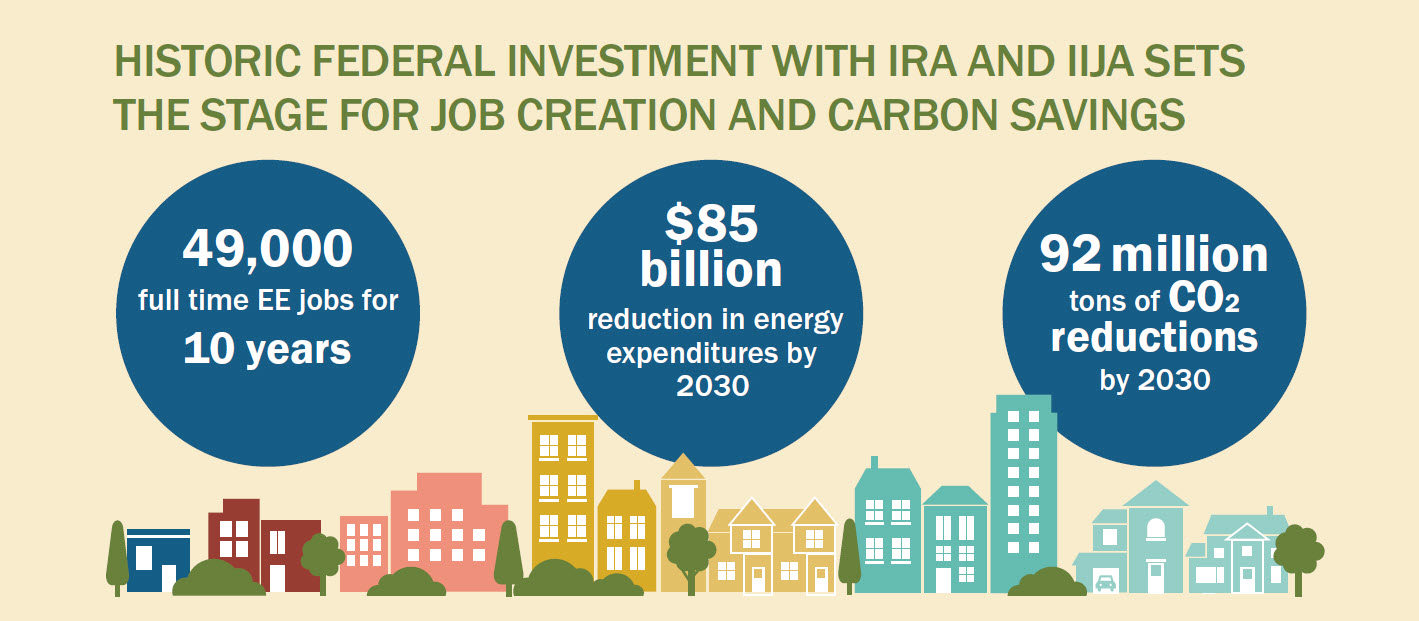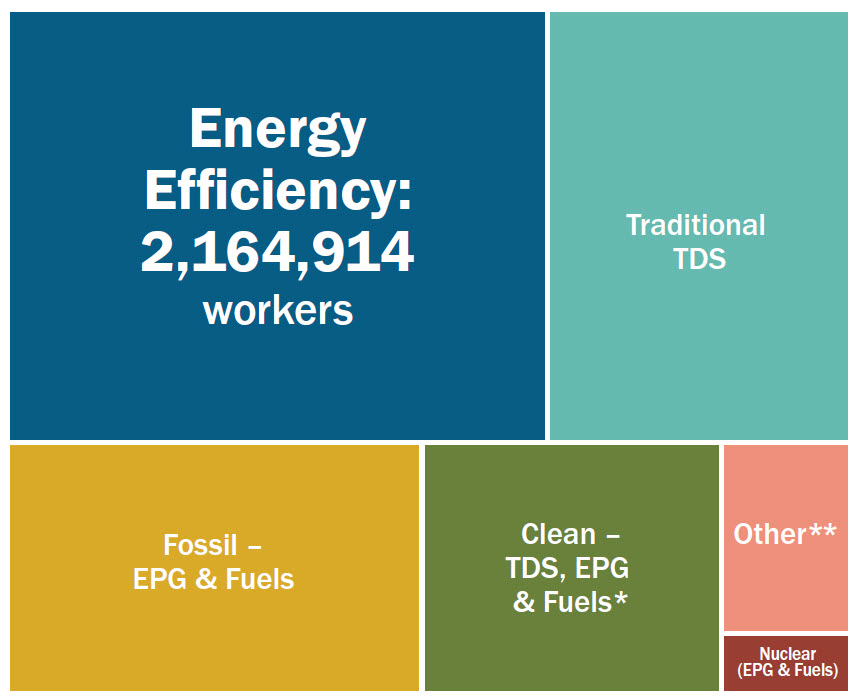December, 2022/January 2023 — Good news! A stronger workforce is coming. Already, nearly 2.2 million Americans are employed by the energy efficiency sector. The Inflation Reduction Act (IRA) and Infrastructure Investment and Jobs Act (IIJA) bring historic investments in efficiency to all sectors of the U.S. economy.
The new Energy Efficiency Jobs in America provides details for energy efficiency jobs, the largest portion of the overall U.S. clean energy workforce. The federal government is unlocking billions of dollars for efficiency investments in buildings via rebates and tax credits. These commitments spark private-sector investment and confirm efficiency’s vital role in the economy.
Energy efficiency (EE) is a prerequisite to addressing climate change in our built environment, and a key tool for equity initiatives.

Find your state on this dedicated website* with statistics from the sixth annual U.S. energy efficiency jobs report by E4TheFuture and E2.
Efficiency is a proven job creator. Yet now more than ever, the sector still needs key policy support particularly around effective implementation of the EE provisions in IRA and IIJA. Along with a focus on implementation, the continued funding for government-led energy efficiency activities is also crucial to realizing the benefits of EE and maximizing its potential.
Data in the report will help you explain how efficiency has the breadth and depth to tackle issues such as climate, equity, and resilience.
Statistics for each state (partial list):
- energy sector size comparisons
- total EE businesses / size of companies
- three quick ways to view EE’s potential
- percentage of military veterans and construction workers in EE
Among the topics in the 2022 report:
- demographic data trends
- real people, real Faces of EE
- how efficiency affects resilience, saves lives and reduces property losses

Energy Efficiency Jobs in America 2022 provides detailed fact sheets with statistics on efficiency jobs for all 50 states and the District of Columbia. The report was re-issued in early 2023 with detailed county data, and more specifics.
This report is based on data from the U.S. Bureau of Labor Statistics using methodology developed for the U.S. Department of Energy, as well as a comprehensive survey of tens of thousands of businesses.
See FAQs.
This was updated 1/17/23 with the addition of county-level data. For more information, contact E4TheFuture.
